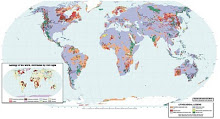Environ Sci Technol. 2011 May 1;45(9):4010-5. Epub 2011 Apr 6.
Mestrot A, Merle JK, Broglia A, Feldmann J, Krupp EM.
TESLA (Trace Element Speciation Laboratory), Chemistry Department, University of Aberdeen , Aberdeen, AB24 3UE, United Kingdom.
Abstract: Arsenic (As) occurs in a variety of different chemical forms, among them volatile (gaseous) species, usually referred to as arsine and methylarsines. Here we demonstrate that arsine and methylarsines are stable in air in concentrations at the μg/L gas level. We determined half-lives of approximately 8 h under daytime conditions (UV light) for all methylated arsines, while the same species were found to be considerably more stable in night-time (dark) conditions. Arsine (AsH(3)) showed under both day and night-time conditions, considerably higher stabilities than methylated arsines. We show here that volatile As species seem stable enough to travel considerable distances in the atmosphere from a point source before converting into nonvolatile, oxidized compounds. Also, the degradation pathway leading to the conversion to nonvolatile compounds was investigated using computational chemistry. Arsine and methylarsines' reactions with the hydroxyl radical (•OH) as well as As-C and As-H bonds strengths in the species studied were modeled. Results showed that conversion could not be explained by H abstraction, nor by OH addition. Moreover, it was found that As-C and As-H bonds strengths are not the determining factor responsible for the decrease in stability with ascending methylation of the different volatile arsine species, as previously suggested.
Monday, May 16, 2011
Subscribe to:
Post Comments (Atom)




No comments:
Post a Comment